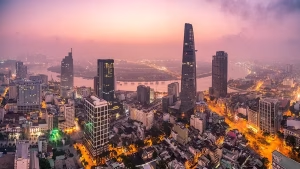Traveling to Bali? Bali is one of those places that seems to exist in a dream—where lush rice terraces cascade down hillsides, turquoise waves crash beneath cliffside temples, and incense wafts through the air as scooters zip by. It’s a tropical paradise, yes, but it’s also a place of contrasts: ancient traditions coexist with modern cafés, serene retreats are just around the corner from buzzing nightlife, and spiritual rituals are practiced alongside thriving tourism. For first-time visitors, this dynamic can be both magical and a bit overwhelming.
Despite its popularity, Bali is not without its quirks. From confusing transport options and hidden fees to unexpected weather patterns and cultural customs, there are many things that guidebooks and travel vlogs don’t always prepare you for. The good news? Once you know what to expect, navigating the Island of the Gods becomes a lot easier—and far more enjoyable. Whether you’re a backpacker on a budget, a couple planning a honeymoon, or a solo traveler chasing waterfalls, having the right information beforehand can make all the difference.
After spending over four months traveling around Bali—from the surf breaks of Uluwatu to the volcanic slopes of Mount Batur—I’ve gathered practical, honest, and experience-based insights to help you plan better. In this guide, I’ll walk you through 17 things I truly wish I had known before landing in Bali. These tips will save you time, money, stress, and maybe even a scooter accident or two—so you can focus on what really matters: enjoying the island’s incredible beauty, culture, and adventure.
1. Getting Around Bali: Transport Tips for Travelers
Bali does not have a reliable public transportation system, which can be a surprise for travelers expecting a more developed tourist infrastructure. The main ways to get around the island are via ride-sharing apps, shuttle buses, private drivers, or renting a scooter. Options like Gojek, Grab, and Bluebird are extremely useful for short distances and are generally cheaper than traditional taxis.

Scooter rental is the most common and flexible way to explore Bali. Daily rentals start around $5 USD, and weekly or monthly rates can save you even more. However, Bali’s roads are chaotic, with inconsistent traffic laws and frequent congestion, especially in southern areas like Seminyak, Kuta, and Canggu. If you’ve never ridden a scooter before, consider practicing in quieter towns like Ubud or the northern regions.
If you’re not comfortable driving, hiring a private driver is a great alternative for day trips. Drivers can be booked through hotels or ride-sharing apps, and a full-day hire usually costs around $40–$60 USD, depending on the distance. It’s also a good way to learn about local customs and landmarks, as many drivers are happy to share insights along the way.
Lastly, short intercity travel (like getting to the Gili Islands or Nusa Penida) often involves booking ferries or shuttle/ferry combinations. Local travel agencies can assist, but be wary of inflated prices. Always compare quotes online and confirm the pickup and drop-off locations in advance.
2. Where to Start Your Bali Journey
The island of Bali has a diverse layout, and choosing your starting point can set the tone for your entire trip. For most travelers, Canggu is an ideal place to begin. It’s lively, laid-back, and full of great food, yoga studios, surf spots, and coworking spaces. While Kuta and Seminyak were once the go-to destinations, many now prefer Canggu for its younger vibe and social atmosphere.
Canggu is also one of the best places for solo travelers. The abundance of social hostels, wellness retreats, and digital nomad hubs makes it easy to meet people. You’ll find everything from dorm beds to boutique hotels and villas with private pools. If you’re on a budget, hostel prices start at around $10 USD per night with amenities like pools, free breakfast, and nightly events.

This area also offers quick access to beautiful black sand beaches, local warungs, and Instagram-worthy cafes. Echo Beach is great for sunsets and casual drinks, while Berawa is known for its trendy shops and brunch spots. Canggu serves as a good home base to explore southern Bali before moving inland or to the islands.
Whether you’re planning a weeklong escape or a month of adventure, Canggu’s accessibility, community, and convenience make it a fantastic launch point.
3. Hidden Costs: Small Fees That Add Up
Many travelers are caught off guard by the constant stream of small charges in Bali. While each fee may seem minor—such as 2,000 to 10,000 IDR ($0.15–$0.70) for parking or 25,000 IDR ($1.50) for beach access—they add up quickly over the course of a few weeks.
You’ll often pay to park scooters outside restaurants, shops, and even temples. Some beaches charge entrance fees, especially the more popular or Instagram-famous ones. If you plan to visit one of Bali’s scenic swings or viewpoints, expect to pay a separate photo or entry fee. It’s always a good idea to carry small cash in local currency for these transactions, as most vendors don’t accept cards.
Even at temples or cultural sites, there are often separate charges for entry, sarong rental, and parking. Some warungs and cafes may also have a small service or tax fee not listed on the menu. It’s not a scam—it’s just how things work here.
For budgeting purposes, it’s wise to allocate a small daily amount (e.g., $5–$10) specifically for these incidental costs. Keeping a stash of coins and small bills will help you navigate these charges smoothly and avoid awkward moments.
4. Scooters Are the King of the Road—But Be Careful
Traffic in Bali is notoriously chaotic. Roads are often narrow, congested, and shared by scooters, cars, trucks, and the occasional dog or chicken. Renting a scooter is the most convenient way to navigate Bali’s traffic, but it’s not for the faint of heart—especially if you’re new to riding.
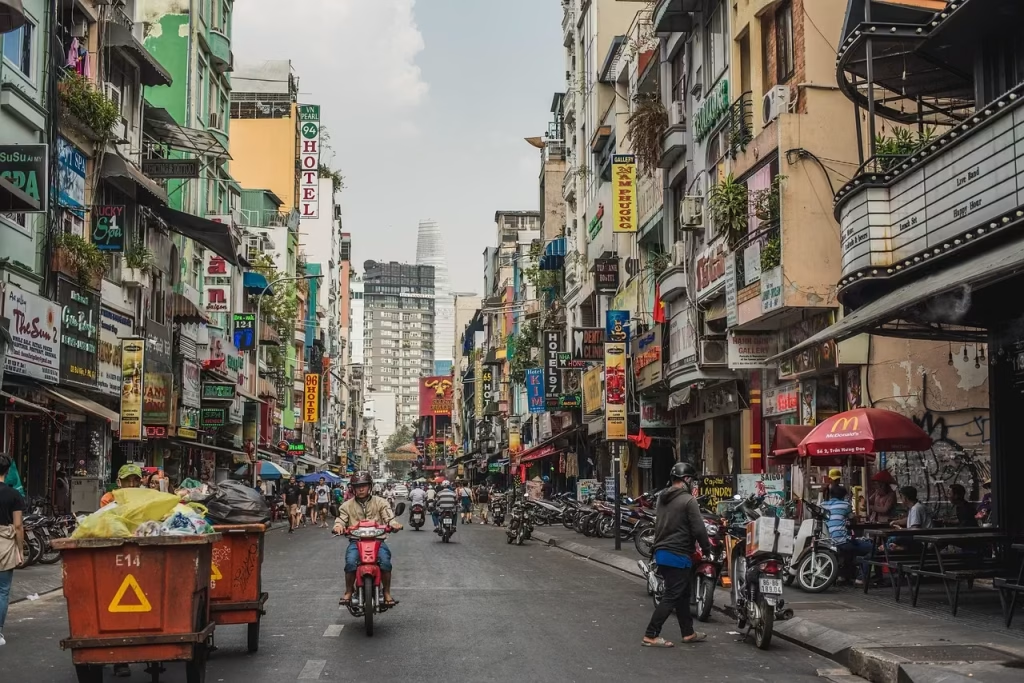
If you’re confident on two wheels, renting a scooter can give you incredible freedom to explore. You can access hidden waterfalls, remote beaches, and quiet cafes that are unreachable by car or public transport. Daily rentals usually cost between 70,000 and 100,000 IDR ($5–$7 USD), and weekly or monthly deals are widely available.
That said, first-timers should take safety seriously. Wear a helmet at all times, drive slowly, and avoid the roads after dark if possible. Consider practicing in quieter areas like Munduk or Amed before tackling busier hubs like Denpasar or Canggu. Always check that your travel insurance covers scooter-related incidents and that you carry an international driver’s permit (IDP) to avoid fines or trouble with local police.
It’s also worth noting that fuel is cheap and widely available—even in water bottles from roadside stalls. Just be cautious when refueling this way, and avoid driving in the rain or through deep puddles, as Bali’s drainage systems can overflow quickly.
5. Booking Accommodation: Where and How to Find the Best Deals
Bali offers an astonishing range of accommodation options—from $5 hostels to $1,000-per-night luxury villas. The three most commonly used platforms for booking are Agoda, Booking.com, and Airbnb. Each offers different strengths: Agoda often has flash deals, Booking.com is great for filters and reviews, and Airbnb provides unique stays in villas or local homes.
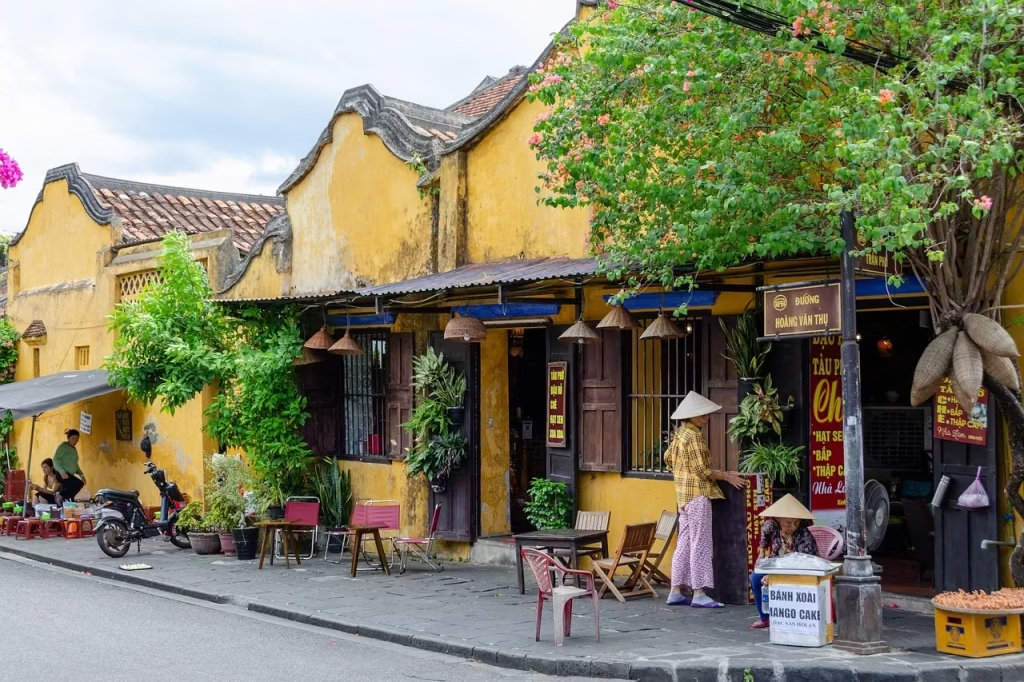
In recent years, Airbnb prices in Bali have risen, partly due to increased demand for private villas. If you’re on a budget or looking to meet other travelers, hostel booking sites like Hostelworld are your best bet. Many hostels in Bali offer free breakfast, yoga classes, communal kitchens, and co-working spaces—ideal for both backpackers and digital nomads.
When booking accommodation, consider location carefully. Canggu, Seminyak, and Kuta are best for nightlife and cafes; Ubud is perfect for yoga, nature, and culture; and Uluwatu is great for surfers and beach lovers. Munduk and Sidemen offer quiet, scenic escapes, while island stays on Nusa Penida or Gili Trawangan give you beachy seclusion.
Always check guest reviews, particularly comments on cleanliness, internet speed, and noise levels. If you’re planning a longer stay, some hosts will offer discounts for weekly or monthly bookings. Also, don’t forget that many villas and homestays allow you to negotiate a better rate in person.
6. Planning Your Itinerary: How to Make the Most of Your Time
Bali is small in size but rich in experiences. While the island may seem manageable on a map, road travel is slow due to winding roads and frequent traffic. Even short distances can take over an hour to cover, so a well-thought-out itinerary is essential.
If you have a month to spend in Bali, a diverse itinerary can help you experience beaches, jungles, volcanoes, and islands. A sample route might look like this: start with five days in Canggu for social vibes and surfing. Then, head to Ubud for four days to enjoy temples, rice terraces, waterfalls, and the famous Mount Batur sunrise trek.

After Ubud, spend a few days in Munduk, known for its cool climate and serene waterfalls. From there, you can either go north to Lovina to see dolphins at sunrise or head east to Amed, where you’ll find peaceful black sand beaches and views of Mount Agung. Next, take a ferry to the Gili Islands—Gili Trawangan for parties or Gili Air for relaxation.
Be sure to visit Nusa Penida, home to Instagram-famous Kelingking Beach and other epic viewpoints. Spend 2–3 days exploring by scooter or guided tour. If time allows, continue to the quieter islands of Nusa Lembongan and Nusa Ceningan. End your trip in Uluwatu for clifftop sunsets, white sand beaches, and world-class surf.
Keep your itinerary flexible. Bali is a place that invites slow travel, and you may fall in love with a spot and want to stay longer. Just make sure you leave some space between transitions and account for the occasional rainy day or travel delay.
7. Respect the Offerings and Balinese Culture
As you explore Bali’s streets and temples, you’ll likely notice small palm-leaf baskets filled with flowers, incense, and food placed on the ground or at entrances. These are called canang sari—daily offerings made by locals to the gods as part of Hindu religious rituals. They are a beautiful symbol of devotion and are found everywhere—from sidewalks to store entrances.
It’s important to avoid stepping on these offerings, as doing so is considered disrespectful. Even if they’re placed in busy areas, try to walk around them. The offerings are not just decorative—they carry deep spiritual meaning and are part of the daily rhythm of life in Bali. In fact, many locals prepare them each morning with prayers and blessings.

Bali stands out from the rest of Indonesia due to its predominantly Hindu population, whereas most of the country is Muslim. This religious distinction influences everything from temple architecture to festivals and customs. Respecting local traditions—like dressing modestly at temples or removing your shoes before entering a home—is essential.
Learning a few local phrases like “Terima kasih” (thank you) or “Selamat pagi” (good morning) can go a long way in building rapport with Balinese people. Their warmth and hospitality are part of what makes the island so special, and showing appreciation for their culture enhances your overall experience.
8. Bargaining Is Expected—Don’t Be Shy
If you’re shopping in Bali’s markets or booking transport, get ready to bargain. Haggling is not just acceptable—it’s expected. Vendors often quote higher prices to tourists, so politely negotiating is part of the cultural norm. Don’t worry, you won’t offend anyone by asking for a better deal.
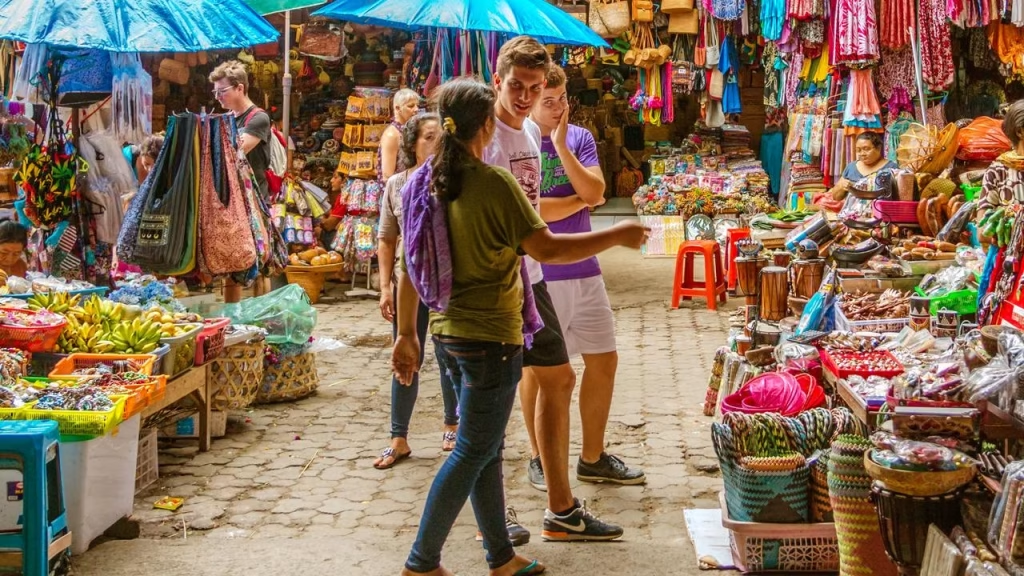
Start by offering about 50–60% of the initial asking price and work your way up. Always maintain a friendly tone and smile—it helps keep the interaction light and respectful. Bargaining can be especially useful when buying souvenirs, clothes, and booking tours or boat tickets. For example, a quoted ferry price of 600,000 IDR might easily drop to 400,000 IDR with a little effort.
However, some prices are fixed, especially in restaurants, convenience stores, or when using ride-sharing apps like Grab or Gojek. Don’t try to haggle in these situations. It’s also worth checking the average going rates for services in advance to avoid being overcharged.
If you feel uncomfortable or pressured, simply walk away. There’s often another stall or driver offering the same thing nearby. With a little practice, you’ll find bargaining to be fun, and you’ll likely leave with better deals—and good stories.
9. When to Visit Bali: Dry vs. Wet Season
Bali has two main seasons—dry and wet—and the timing of your trip can significantly affect your experience. The dry season typically runs from June to September and is considered the best time to visit, especially if you’re planning outdoor activities like surfing, hiking, or beach-hopping.
During the dry season, you’ll enjoy sunny days, lower humidity, and clearer skies. It’s also when most festivals take place, including Bali’s famous Galungan and Nyepi (Day of Silence). However, this period is also peak tourist season, which means more crowds and higher prices for accommodation and flights.

The wet season lasts from November to April, bringing heavier rainfall and higher humidity. Showers often come in short bursts—usually in the afternoon or evening—so you can still enjoy activities with a little flexibility. One major advantage of visiting during the wet season is cost savings: hotel rates, flights, and tour packages tend to be cheaper, and the island is less crowded.
It’s worth noting that Bali’s climate can be unpredictable. Some dry seasons still bring occasional rain, while certain months in the wet season may be surprisingly dry. Regardless of the season, pack a light rain jacket, waterproof sandals, and an umbrella to stay prepared. And if you’re into photography, the wet season brings lush greenery and dramatic skies—perfect for landscape shots.
10. Indonesian Food: A Culinary Adventure Worth Taking
Indonesian cuisine may not be as globally known as Thai or Indian food, but once you dive into it, you’ll wonder why. Bali offers a rich mix of spicy, savory, and satisfying dishes that cater to all types of eaters—including vegetarians and vegans. Some of the most iconic staples include nasi goreng (fried rice), mie goreng (fried noodles), satay skewers, and gado-gado (a hearty salad with peanut sauce).
Tempeh, a fermented soybean cake, is a local protein-packed superfood and a great meat alternative. Often stir-fried or deep-fried, it’s a favorite among vegetarians and vegans alike. Whether you’re at a beachside shack or a fancy café, you’ll likely see tempeh on the menu.

Don’t miss the opportunity to eat at a warung, a traditional family-owned eatery. These casual spots offer home-style cooking and usually operate on a buffet-style basis where you choose your dishes by pointing. Meals at warungs are not only delicious but also incredibly cheap, often costing less than $2 USD.
Bali’s love for spice is strong, so if you’re not a fan of heat, be sure to say “tidak pedas” (not spicy) or “pedas sedikit” (a little spicy). Local sambal (chili paste) can set your mouth on fire—but it’s also packed with flavor. Be adventurous, but know your spice limit!
11. Bali’s Café Scene: Where Instagram Meets Quality
One of Bali’s hidden gems is its thriving café culture. Especially in areas like Canggu, Ubud, and Seminyak, you’ll find countless aesthetic, health-conscious, and creative cafés that rival the best in Melbourne, London, or Los Angeles. These spots serve everything from smoothie bowls and avocado toast to specialty coffee, vegan cheesecakes, and keto-friendly fare.

Most of these cafés cater to digital nomads and tourists, meaning they often come with fast Wi-Fi, minimalist interiors, and trendy playlists. It’s not uncommon to spend hours lounging in a café with your laptop or book, sipping on a turmeric latte or kombucha on tap. Whether you’re plant-based, gluten-free, or just craving great Western food, you’ll find options that fit your needs.
However, many of these cafés include a 15% service and tax charge, which can catch travelers off guard if it’s not listed on the menu. Always check the bill before paying and don’t hesitate to ask staff if the tax is included in the prices. Despite this, the cost of eating out is still very reasonable compared to Western standards.
If you’re a foodie or coffee lover, Bali is a dream come true. Beyond their photogenic appeal, these cafés pride themselves on sourcing local, organic ingredients and often support local farmers. Explore freely, and you’re bound to discover a new favorite hangout around every corner.
12. Bali Beaches: Expectations vs. Reality
When you think of Bali, you might picture pristine white sand beaches and crystal-clear waters. While Bali does have stunning beaches, not all of them match the postcard images you’ve seen online. The popular beaches in Canggu, Seminyak, and Kuta, for instance, are known for black volcanic sand and strong waves—great for surfing, but not always ideal for sunbathing or swimming.
These urban beaches can also get crowded and may not be as clean as you’d expect. Still, they offer vibrant sunset scenes and beach bars with live music. For a more peaceful or picturesque experience, you’ll need to venture beyond the south.

To find the turquoise water and white sand you’re dreaming of, head to the Gili Islands, Nusa Penida, or Lombok. Gili Trawangan and Gili Air boast beautiful coral beaches perfect for snorkeling and sunbathing. Meanwhile, Nusa Penida’s Kelingking Beach and Diamond Beach are truly breathtaking—though getting down to them requires a steep hike.
Within Bali itself, the Uluwatu region offers some of the best coastal beauty. Think dramatic cliffs, turquoise surf spots, and hidden coves like Padang Padang and Bingin Beach. These areas also tend to be less commercialized and ideal for a romantic escape or surf adventure.
So yes, Bali does have amazing beaches—but managing your expectations and exploring beyond the main tourist zones is key to finding them.
13. Stay Safe: Monkeys, Dogs, and Rabies Awareness
Bali is known for its natural beauty, but not all of its wildlife is harmless. One thing to be cautious of during your trip is rabies. Although rare, rabies is present in Bali, and both monkeys and stray dogs can be carriers. That doesn’t mean you need to avoid all animals, but it does mean exercising caution, especially when around aggressive or overly friendly strays.
The Monkey Forest in Ubud is a popular attraction, and while the monkeys there are generally well-fed and used to humans, they can still be unpredictable. Avoid carrying plastic bags or food in plain sight, as these will attract attention. Keep your distance, and do not attempt to touch or feed them. If a monkey climbs on you or you get scratched or bitten, seek medical attention immediately—even if the injury seems minor.
Stray dogs are another concern, particularly in rural areas or at night. Many dogs are harmless and simply roam the streets, but it’s wise not to pet or provoke them. If you’re scratched or bitten, go to a hospital and get a rabies post-exposure vaccine as soon as possible. Most local clinics and hospitals in tourist areas are equipped to handle this.
Travel insurance that covers medical emergencies, including rabies treatment, is highly recommended. Prevention is your best defense—be aware, avoid unnecessary contact with animals, and teach children in your group to do the same.
14. The Not-So-Great Side of Bali (and How to Stay Smart)
While Bali is incredible, it’s not without its downsides—and being aware of them can help you avoid common pitfalls. One of the main issues travelers face is petty theft. Mobile phones and bags have been known to be snatched from the backs of scooters or even from tables at roadside cafes. Always hold your belongings close, especially when riding or walking through crowded areas.
Scams are also something to watch out for. Some taxi drivers may try to overcharge or bypass the meter. Always use trusted apps like Grab or Bluebird, and avoid negotiating fares on the street unless absolutely necessary. If a driver insists you pay more than the quoted app price, politely decline and request a different ride. It’s okay to be firm—scammers rely on travelers feeling awkward or unsure.
Outside of Bali—in places like Lombok, Java, or Sumatra—you may receive a lot of attention if you’re a foreigner, particularly if you have lighter skin or dress in Western clothing. Many locals will ask to take photos with you, especially in remote areas. While usually friendly, this attention can be overwhelming for some travelers, particularly women. Dressing modestly and being respectful of local customs will help you blend in and avoid unwanted attention.
Also, Bali is generally tolerant, but in other parts of Indonesia where Islam is the dominant religion, modest dress and conservative behavior are more expected. Always research your next destination before you arrive and adjust accordingly. A respectful attitude goes a long way in ensuring smooth interactions wherever you go.
15. There’s More to Indonesia Than Just Bali
Many travelers visit Bali and assume they’ve seen what Indonesia has to offer—but that couldn’t be further from the truth. Indonesia is an archipelago of over 17,000 islands, and each region offers its own unique culture, cuisine, landscapes, and experiences. If you have the time, venture beyond Bali—you won’t regret it.
Lombok, located just east of Bali, is a quieter alternative with fewer tourists, incredible beaches, and Mount Rinjani, Indonesia’s second-highest volcano. The Gili Islands (Trawangan, Air, and Meno) are famous for their laid-back vibes, crystal-clear waters, and lively beach scenes. They’re perfect for diving, snorkeling, and escaping the hustle of mainland Bali.

Java, Indonesia’s most populous island, is home to bustling Jakarta and cultural gems like Yogyakarta, Borobudur Temple, and Mount Bromo. East Java is especially known for Mount Ijen, a surreal volcanic crater lake that glows blue at night due to sulfuric gas—a must-see for adventurous travelers. Guided tours from Bali can take you to both Mount Batur and Ijen in one incredible journey.
For the truly intrepid, consider visiting Flores and Komodo Island to witness the legendary Komodo dragons and dive some of the world’s most vibrant coral reefs. Indonesia offers landscapes and experiences for every type of traveler—from beaches and mountains to jungles and wildlife sanctuaries.
So don’t stop at Bali. Use it as a gateway to explore one of the most diverse and underrated countries in the world.
16. Want the Best Photos? Wake Up Early
If you’ve ever wondered how influencers get those perfect Bali shots with no one around—whether it’s the Tegalalang rice terraces, Gates of Heaven at Lempuyang Temple, or the cliffs of Kelingking Beach—the answer is simple: they go at sunrise. Early morning is the golden ticket to experiencing Bali’s top attractions without the crowds, the heat, or the waiting lines.

Tourist sites in Bali can get extremely busy, especially mid-morning to late afternoon. Arriving early not only helps you avoid the peak crowd but also lets you capture those serene, peaceful moments when the island is just waking up. This is also when the lighting is soft and golden, making for the best photos.
If you’re serious about getting that iconic shot, plan ahead. Check opening hours (some temples open as early as 6 AM), hire a driver the day before, and be willing to sacrifice a bit of sleep. Trust us—it’s worth it. Bring a change of clothes and water, especially if you’re visiting sites that require climbing or waiting for the fog to lift.
Early starts also help with weather conditions. During the wet season, rain usually falls in the late afternoon, so getting your sightseeing done early increases your chance of a dry, pleasant visit. Whether you’re a photographer or simply a traveler who values calm and beauty, setting your alarm for sunrise will pay off in unforgettable experiences.
17. Budgeting for Bali: Travel Smart, Spend Wisely
One of Bali’s greatest strengths is its flexibility for every budget. Whether you’re a backpacker looking to stretch $20 USD a day or a luxury traveler ready to drop thousands, Bali offers incredible value across the board. The island is known for its affordability—especially for accommodations, local food, and activities.
For budget travelers, dorm beds in hostels start at just $5 USD, and warung meals can cost as little as $1–2. Many hostels include breakfast and have free walking tours or community activities. If you’re on a $20/day budget, you can cover food, lodging, and even a few excursions if you plan wisely. For mid-range travelers, $40–60 a day allows for private rooms, restaurant dining, and scooter rentals.
Luxury seekers will find villas with infinity pools, private chefs, and spa services at a fraction of what they’d cost in Europe or the U.S. You can rent a gorgeous private villa for $100–300/night, enjoy fine dining for $15–25 a person, and book multi-day guided tours with ease. If you’re celebrating a honeymoon or special occasion, Bali delivers luxury without breaking the bank.
One thing to note is that alcohol is relatively expensive compared to food and lodging. Imported wines, cocktails, and spirits can add up quickly—especially at clubs or upscale bars. If you’re planning to party every night, factor in an extra budget. Local beers like Bintang are more affordable and widely available.
Whatever your travel style, Bali rewards smart spending. Save on basics like meals and transport so you can splurge on memorable experiences—sunrise volcano treks, snorkeling tours, massages, or island hopping. The best part? You’ll likely leave feeling like you got more than what you paid for.
Final Thoughts
Bali is a destination full of beauty, culture, adventure, and contrast. With a little planning and the right insights, your trip can go from good to unforgettable. These 17 tips—based on real travel experience—will help you navigate the island confidently, avoid common pitfalls, and fully enjoy everything Bali has to offer.
Whether you’re a solo backpacker, a digital nomad, or a couple on honeymoon, Bali welcomes you with open arms, tropical breezes, and more than a few hidden gems. So pack your bags, embrace the island’s unique rhythm, and get ready for the trip of a lifetime.

